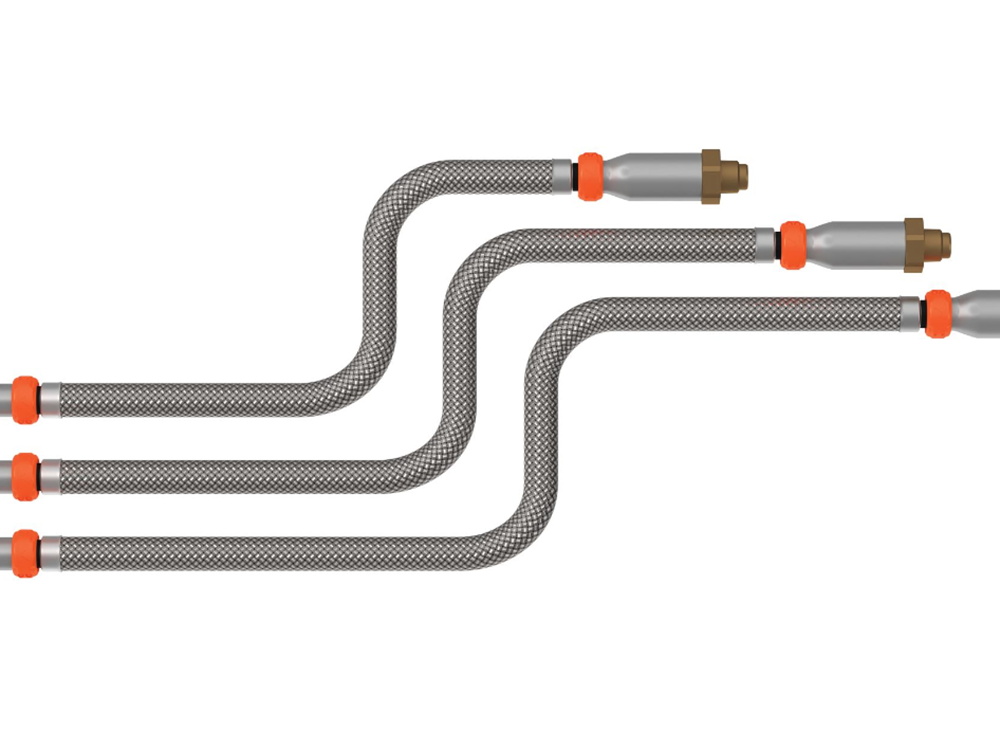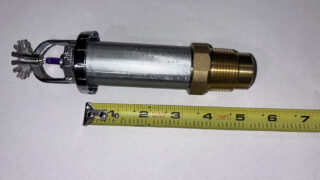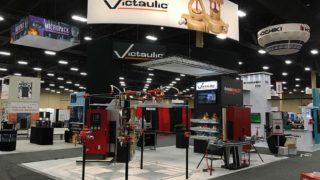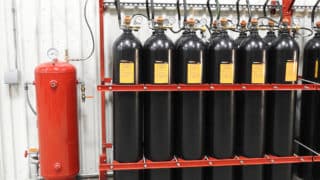Posted on October 31st, 2024
Every year, as the cold weather sets in and temperatures drop, horror stories surface across the country about frozen pipes and the reckoning they leave in their wake:
- On January 12, 2024, in Arizona, 74 residents of a senior living center had to be evacuated after pipe broke due to internal ice formation, which caused a drywall collapse.
- On January 14, 2024, part of Kansas City International Airport had to be closed off for days after sprinkler piping was compromised during a severe wind chill warning, leading to a water leak over three baggage carousels.
- On January 18, 2024, a facilities manager at Anne Deacon Center for Hope, a mental health and detox stabilization center in Washington, shared that the facility suffered $4,500 in damages caused by a frozen sprinkler system.
- On January 19, 2024, in Illinois, Grayslake Middle School announced school buildings would be closed for four to six weeks while the district repaired weather-related damages, including a frozen sprinkler system.
An effective way to minimize the risk of freeze-ups in wet sprinkler systems is to use dry sprinklers in areas exposed to below-freezing temperatures, such as balconies, breezeways and parking garages. However, improper dry sprinkler installation can be just as problematic as not having a freeze-protection solution at all.
Why do systems with dry sprinklers freeze?
One of the most common scenarios behind freeze damage in dry sprinkler systems is when contractors install the wrong barrel length.
When dry barrel sprinklers are too short, cold will travel along the metal barrel to the sprinkler seal and cause the water at that point to freeze. To prevent this, a portion of the barrel must be exposed to a heated space — known as the minimum exposed barrel length — to warm the barrel to above 40°F, as outlined in “NFPA 13: Standard for the Installation of Sprinkler Systems.”
We previously wrote about the importance of properly calculating exposed barrel lengths and how to do it correctly.
The cost of compromised sprinkler systems due to freeze-ups
Damaged sprinkler piping is a major inconvenience that falls on the property owner’s shoulders. They’re an expensive life-safety risk whose ripple effects stretch far beyond a singular individual or building.
Property owners
The most obviously affected party is the property owner, who will have to pay for repairs to their building. In addition to replacing damaged sprinkler system components, installers require access to the system to address leaks, which means cutting into drywall and coordinating with additional trades to patch and paint.
Adding to the upfront construction expense, section 15.5.2 of the “NFPA 25: Standard for the Inspection, Testing, and Maintenance of Water-Based Fire Protection Systems” outlines that property owners shall implement a fire watch as one way to address an impaired sprinkler system for more than 10 hours in a 24-hour period — even if a single sprinkler is out of commission. A fire watch officer (trained personnel) will need to be present on-site for as long as it takes to restore full system functionality, which can range from hours to weeks.
Building occupants
Sprinklers are designed to protect human lives and minimize damage to property in the event of a fire. That’s what’s at stake whenever a building lacks adequate fire protection.
In residential buildings, occupants may be evacuated or displaced in the immediate aftermath of a ruptured sprinkler system. They will also need to accommodate construction schedules as contractors come in and out of their dwellings for repairs. If the weather event affected a large area — such as in 2021, when a historic freeze affected millions of Texans — contractor availability may be scarce, prolonging the amount of time residents have to wait for repairs.
In commercial settings, business operations may be interrupted while sprinkler systems are brought back to full functionality. If the system discharges or there is a leak, business owners may also face water damage to their property and assets.
Surrounding community
The fire department may be called to assist with a ruptured sprinkler system due to freezing temperatures. If the system discharges, firefighters will likely need to investigate whether it was accidental or caused by an actual fire. In multi-story buildings, crews may need to shut down affected areas while property owners get the impaired sprinkler system fixed.
Firefighting crews need to be in the right place at the right time to protect their communities. Having to respond to an influx of freeze issues due to inadequate installation can take valuable resources away from others in the community who need them.
Three reasons to use flexible dry sprinklers
If a sprinkler system freezes due to using the incorrect dry sprinkler barrel length, contractors should address the root cause of the problem. Even if the originally used length worked for 15 years because there wasn’t a weather event that triggered the freeze, installing the same barrel length again is a mistake.
Understandably, there’s a degree of hesitation that comes with deciding to rework a sprinkler system. Changing the length of a traditional hard barrel dry sprinkler involves reworking drywall, insulation and pipelines, as well as potentially adding unsightly soffits to the occupiable area in cases where there is finite wall space. It quickly becomes a more expensive and involved process compared to working with the existing configuration and taking a chance that there won’t be another weather event that will cause it to fail again.
Replacing traditional dry sprinklers with flexible dry sprinklers like the Victaulic VicFlex™ Dry Sprinkler Series VS1 can be a cost-effective, long-term solution to addressing design challenges and preventing freeze issues.
1. Enable a non-linear sprinkler path
Adding length to a traditional dry sprinkler requires reconfiguring piping layouts to accommodate the extra length needed to comply with NFPA 13 within the existing space. The braided hose on a flexible dry sprinkler will bend or twist as needed in that space, eliminating the need for a linear path between the sprinkler and sprinkler system. If more of the barrel needs to be positioned in the heated space, contractors can bend the hose within the existing wall cavity to meet NFPA 13 requirements without extensive rework.
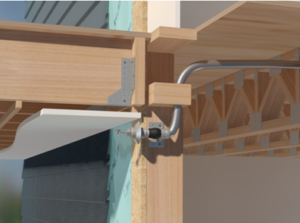
2. Eliminate soffit construction in most scenarios
In spaces with tight real estate, such as over a balcony, adding piping to accommodate longer hard barrels often requires adding or extending a soffit into the occupied space. Doing so reduces usable space and can also be an eye-sore for occupants.
In most cases, using a flexible dry sprinkler will not require adding a soffit because the braided hose can be bent to fit inside the existing wall cavity. The Victaulic VicFlex™ Dry Sprinkler Series VS1 enables a 2” UL bend radius with up to four bends per length for easy installation in tight spaces and around obstructions.
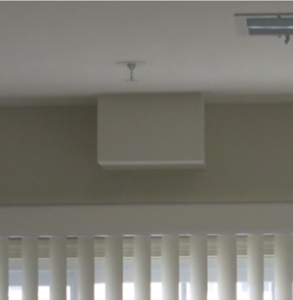
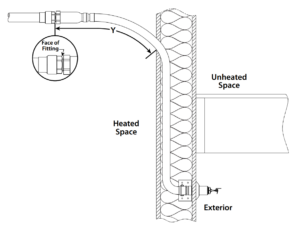
3. Streamline exposed dry barrel length measurements
According to NFPA 13, the minimum exposed dry barrel length is calculated by measuring “along the length of the dry sprinkler from the face of the fitting to which the dry sprinkler is installed to the inside surface of the insulation, wall, or ceiling leading to the cold space, whichever is closest to the fitting.” To properly determine the minimum exposed barrel length, contractors must take into consideration three factors: the exterior temperature, interior temperature and heated space envelope. Using a flexible dry sprinkler helps streamline and eliminate the guesswork from this process since contractors can easily reposition the flexible dry sprinkler to ensure more of it is located inside the heated space without needing to place a second material order.
Learn more about Victaulic’s dry sprinkler system solutions and their applications here.
View the Series VS1 Product Brochure.
Dry Sprinklers for Commercial & Residential Fire Protection
1 Hour | 0.1 CEU | 1 PDH
https://victaulic.myabsorb.com/#/online-courses/54524102-f477-425e-baad-b39d7553880b
